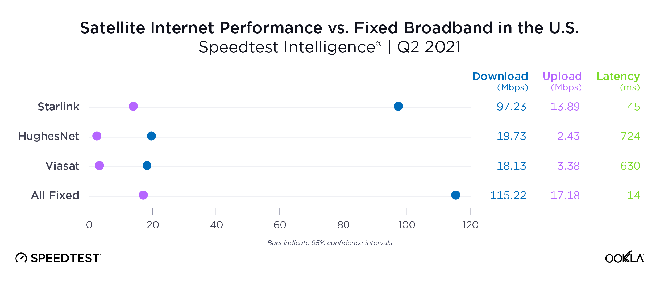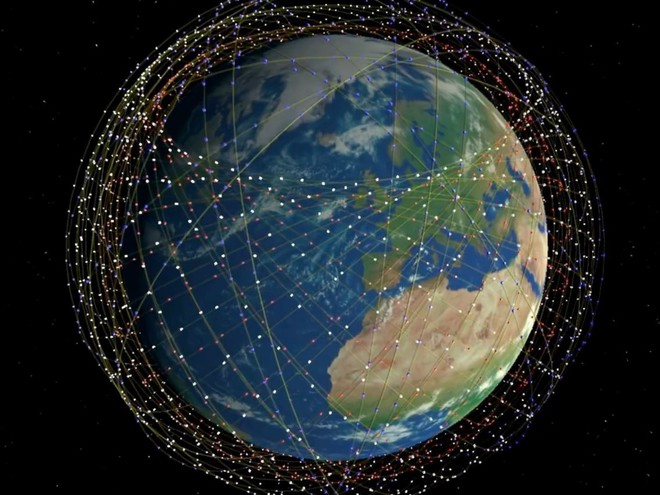Speedtest “sky internet” of Elon Musk: Deserves the best satellite internet service on the planet
- Tram Ho
Finally, SpaceX’s Starlink satellite internet system has officially come into operation. Compared to the cable internet system, satellite internet is the only option for sparsely populated or remote areas. However, this often comes at the expense of stability or speed, but will Starlink follow that same path?
But according to the measuring tool of Ookla, the company famous for the Internet speed measurement application SpeedTest, Starlink’s service is of top quality compared to competitors’ satellite internet services. According to measurement tools, Starlink’s internet is faster globally than those of the leading satellite internet services today.
To evaluate, Ookla compared Starlink’s internet quality to that of HughesNet and Viasat, rival satellite itnernet service providers, as well as fixed broadband internet service. The results show that Starlink’s speed is not only superior in both upload and download compared to satellite internet competitors, but also on par with fixed broadband services.

Starlink’s average download speed in Q2 2021 reached 97.23 Mbps. While the average speed of internet service in the US in the second quarter of 2021 is 115.22 Mbps. Meanwhile, their competitors, HughesNet and Viasat, only achieved speeds of 19.73 Mbps and 18.13 Mbps respectively.
Besides access speed, Ookla also emphasizes that Starlink is the only provider with an average latency that is roughly equivalent to a fixed broadband connection. Low latency is essential for services such as video calling, online calling, online gaming or live streaming.
According to Ookla’s Speedtest report, while broadband internet connections have a latency of about 14 ms, Starlink’s average latency is around 45 ms. Although much worse than a fixed internet connection, Starlink is still far ahead of competitors HughesNet and Viasat when their average latency is only 630 ms and 724 ms.
This once again confirms SpaceX CEO Elon Musk’s previous statement that Starlink has an advantage over traditional satellite internet companies in terms of low latency. The numbers from Ookla also show how promising Starlink’s service is to users.
Currently, Starlink has 1,730 low-altitude satellites in the sky. They are at an altitude closer to the earth’s surface than traditional satellites. Therefore, they can transmit speeds and latency comparable to broadband internet lines when the time to send signals back and forth is shorter.

In contrast, firms like Viasat and Hughesnet rely on high-altitude satellites that have geosynchronous orbits when their rotation speeds match the Earth’s. This layout allows only a few satellites to cover a larger area below the ground, however, the longer distance from the surface makes the delay larger.
Currently, the Starlink service has about 90,000 users, of which 20,000 new users have been added in the past month alone. Not only coverage in the US, this service is also opening to many other countries. Ookla’s test shows that Starlink has the fastest download speed in France (139.39 Mbps) and even surpasses the internet connection in this country (average only 70.81 Mbps). The same is seen in Germany. Of course, Starlink’s latency is still behind fixed internet connections.
Currently, Starlink is still in the process of deploying its satellite network, so the difference in speed between different regions is understandable. In theory, Starlink will cover the world in September, but with the current pandemic and chip scarcity, that may be difficult to come true.
Refer to Gizmodo
Source : Genk
